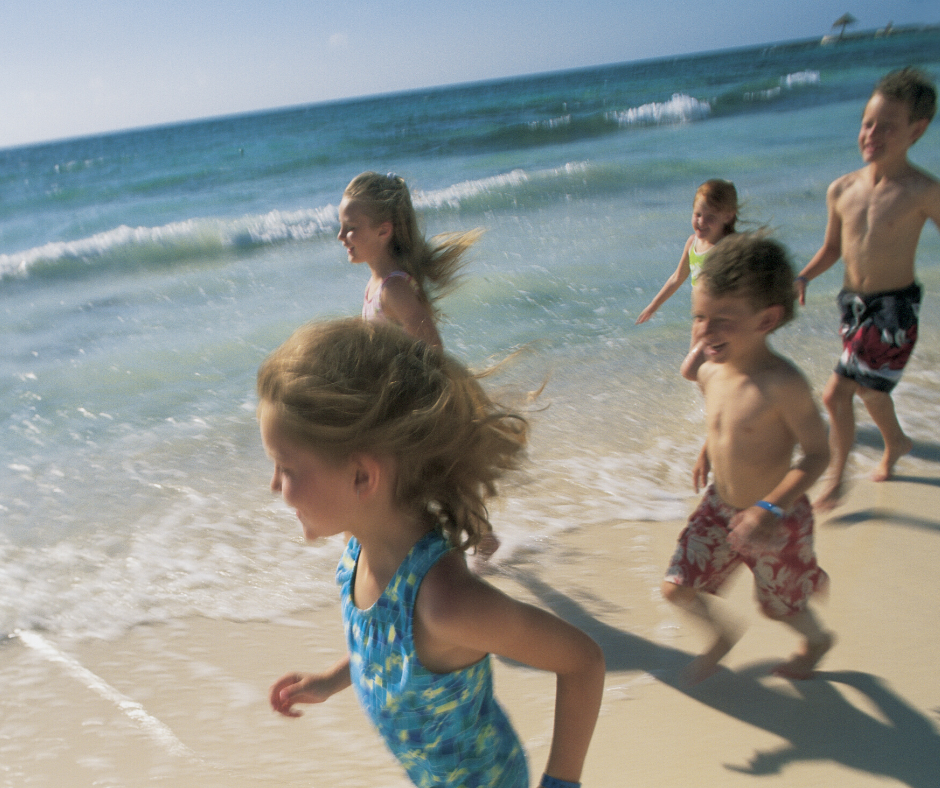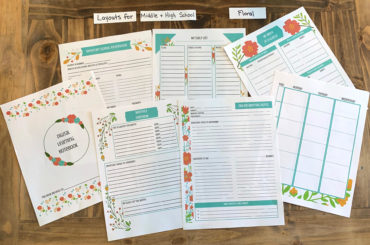When we’re out with our children, it can be downright hard to keep track of them once they’re old enough to be mobile. Little feet go where they want to wander, and they don’t always choose paths that adults can easily follow! The old adage of “there’s safety in numbers” certainly wasn’t written by a parent or caregiver of multiple children. Keeping track of a single child can be quite enough, thank you!

Safety in Numbers Meaning
For the purposes of this article, safety in numbers refers to ways to keep a single child or group of children safe in a mass of strangers. Common situations where we need to be particularly diligent about safety are public events or locations, such as amusement parks, shopping malls, and beaches. The concepts can also apply in everyday situations like trips to the playground.
So, what can we do to encourage safety in numbers for kids?
Here are a few tips that can help.
Match ’em up: matching kids are visible kids.
Grandma might’ve been onto something when she dressed all the kids in matching shirts. We hesitate to do it these days because, well, it isn’t cool. It certainly isn’t necessary all the time, but if you’re going to be somewhere with the masses, being able to spot kids who look exactly alike (at least clothing-wise) is much easier on the brain than trying to remember who wore what. As awful as it is to consider, it’s easy
to ask a stranger, “HAVE YOU SEEN A CHILD WHO’S WEARING THIS SAME SHIRT?” If they refuse to match perfectly, you can at least go with same-colored shirts with different designs on the front. Further, or alternatively, consider using ID wrist bands for emergencies. They’re unobtrusive and can be incredibly helpful. If you have just a single child to look after, as silly as it may sound, make a point to note what he or she is wearing (snap a photo if need be). In a moment of panic, it’s a lot easier to describe a child if we have a clear and current image in our head. Match your own color shirt if it helps!
Practice consent and bodily autonomy at home.
It’s amazing how far-reaching the benefits of practicing bodily autonomy can be. If kids know they’re in charge of their bodies (their “no” means “no!”), they’re much likelier to be safe in public if they get into a situation with someone who seems questionable to them. They haven’t been trained to do whatever an adult says at all costs. Moreover, if they know they can trust you not to demand compliance with the “small things,” they’ll be more likely to listen if you require their attention or presence in a large group of people. They’ll know you when you mean business.
Teach kids to stick together; to know where their “buddy” is.
Safety in numbers has some statistical value. If you can encourage your kids to do the “risky” parts of their outdoor time together as a group, such as crossing the street, odds are drastically in their favor. For example, a driver of a car is much more likely to notice several children crossing the street together than a child walking alone (source). In the age of distracted driving, it’s important to teach our children to be especially mindful of this. The same goes for being anywhere in public; if children have the important job of looking after one another (with supervision, of course), they’re more likely to take it seriously and pay attention to their buddy’s whereabouts.
Use a code word.
Teach kids a code word. If anyone gets into a tricky situation, yelling “MOM!” might not be particularly helpful in a busy setting where lots of women go by that name. Hearing your child yell, “FREE CHOCOLATE,” however, will make your ears perk up and you’ll know those words are for you. (Note: “MOM” is a good choice if your child is trying to get any mom’s attention, even if it’s not yours.) The same goes for you–if YOU use the code word, they’ll know to find you quickly and stay with you. Talk about this ahead of time. Safety in numbers means being able to communicate urgently when you need to. Decide ahead of time what your code word means and what, exactly, happens when someone uses it.
Practice finding safe people.
Let your kids practice finding safe people out in public. Many parents teach their children to look for a police officer or similar if they need help. While there’s some merit to that, it’s not always practical. Some uniforms look different from others (a security guard, a medical worker, an actual police officer, etc.)–and these people aren’t always going to be readily available. Instead, the best advice is to have a
child look for a parent (ideally a mom) with kids. That parent will be more likely to “get it” and know how to help, and perhaps be a safer option, than a random adult without kids. The key here is to practice with them so they have experience knowing who to look for if need be. And this part is important: have them do it from wherever they are, without leaving the spot where they realize they need help. Teach them to stay put. One of these safe people is sure to walk past them; they’re much likelier to reconnect with you if YOU’RE the one retracing your steps than if you’re both wandering around.
Honest, open discussion gives kids and parents peace of mind.
It’s tempting to avoid discussing tricky topics with kids, but the concept of safety in numbers — or how to stay safe in large groups of people — is an important one to address proactively. As always, an ounce of prevention is worth a pound of cure.

BIO: Sarah R. Moore is an internationally published writer and the founder of Dandelion Seed Positive Parenting. You can follow her on Facebook, Pinterest, and Instagram. She’s current world schooling her family. Her glass is half full.





9 Comments
These tips are amazing and all parents should remember them! I really like the idea of a code word and haven’t thought of that before!
These are such great tips! Big crowds make me nervous as my kids get more mobile and dont want to sit in a stroller anymore…but at the same time I love going on adventures and I want them to have fun while still being safe. I’m going to keep all of these in.mind for sure!
Hi Stephanie! I totally agree! Kids need to have fun and be safe at the same time. Thanks for reading the Optimized Life blog on keeping kids safe in a group.
I believe more people need to be aware of these tips! I love the honesty and open discussion!
I totally agree! Kids need to have fun and be safe at the same time. Thanks for reading the Optimized Life blog on keeping kids safe in a group.
These are some great tips!
Thanks for reading the Optimized Life blog on keeping kids safe in a group and commenting!
I do all of these and not only match my 3 but use bright neon colors. It makes a HUGE difference in crowds.
Pingback: Safety in Numbers: 5 Great Ways to Keep Kids Safe in Groups - Dandelion Seeds Positive Parenting